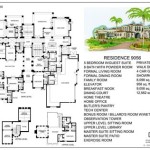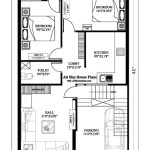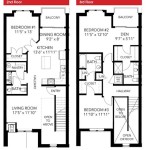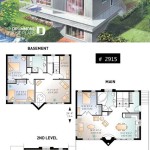How to Design Your Own House Plans
Building a home is a significant undertaking, and the foundation of it all lies in the design. While professionals can handle this intricate process, designing your own house plans can be a rewarding and empowering experience. It allows for personalized touches that reflect your unique style and needs. However, it demands meticulous planning, attention to detail, and a thorough understanding of architectural principles.
1. Planning Your Dream Home: Defining Your Vision
The initial step in designing your own house plans involves defining your vision. This requires introspection and careful consideration of your lifestyle, needs, and preferences. Begin by asking yourself key questions such as:
- What is your budget? Establishing a realistic budget is crucial to ensure your dream home remains attainable.
- What is the size of your desired home? Consider the number of bedrooms, bathrooms, and living spaces you require.
- What style of home appeals to you? Explore different architectural styles, from traditional to contemporary, and choose what resonates with your taste.
- What are your must-have features? Identify any specific elements that are non-negotiable, such as a large kitchen island, a home office, or a backyard patio.
- How will you use each space? Plan for functionality by envisioning how you will use different areas of the house, like the living room, dining room, and bedrooms.
Once you have a clear picture of your dream home, it's time to gather inspiration. Explore design websites, magazines, and books. Visit model homes and study their layouts and features. Collect images of designs that appeal to you and create a mood board to visualize your concept.
2. Sketching Out Your Ideas: Bringing the Vision to Life
With your vision established, the next step is to translate it into tangible blueprints. Begin with simple sketches to capture your initial ideas. This can be done using pencil and paper or digital tools like drawing apps or CAD software. Focus on the overall layout, including the arrangement of rooms, doors, windows, and staircases. Keep the following considerations in mind:
- Flow and Functionality: Design your house plans to facilitate smooth movement between spaces. Consider the placement of doorways, hallways, and traffic patterns to ensure ease of use.
- Light and Ventilation: Incorporate windows and skylights to maximize natural light and ventilation throughout the home. Consider the direction of the sun and the placement of windows to optimize light exposure.
- Privacy: Ensure private areas like bedrooms and bathrooms have sufficient separation from public areas for privacy and quiet.
- Storage: Designate dedicated storage spaces in each room to minimize clutter and maintain a tidy environment.
- Sustainability: Consider environmentally friendly features such as energy-efficient appliances, solar panels, or rainwater harvesting systems.
As you refine your sketches, experiment with different layouts and features. Explore various combinations of rooms, sizes, and configurations to find the best arrangement that meets your requirements. Remember, this is an iterative process, and you can adjust your plans as needed.
3. Bringing Professional Expertise: Collaborating with Architects and Designers
While you can create basic house plans on your own, seeking professional assistance can significantly enhance the design process. Architects and interior designers possess specialized knowledge and experience that can contribute valuable insights and ensure your plans are technically sound and meet building codes. Their expertise can be particularly helpful in areas such as:
- Structural Design: Architects can ensure your home's structure is safe and stable, considering factors like foundations, load-bearing walls, and roof design.
- Building Codes and Regulations: Professionals are familiar with local building codes and regulations, ensuring your design meets all necessary standards.
- Space Optimization: Architects can suggest efficient use of space and layout solutions to maximize functionality and minimize wasted area.
- Aesthetic Considerations: Interior designers can help you select materials, finishes, and furnishings that align with your style and create a cohesive and visually pleasing environment.
Collaborating with professionals can provide valuable feedback and guidance, ensuring your dream home is both functional and aesthetically pleasing. They can help you navigate complex decisions and refine your design to reflect your individual preferences and needs. Consider engaging an architect and designer at various stages of the planning process, such as initial concept development, plan review, and finalizing details.
Designing your own house plans requires dedication, research, and a meticulous approach. By carefully defining your vision, sketching out your ideas, and seeking professional guidance when needed, you can create a home that reflects your unique style and meets your specific requirements. Remember, the journey of designing your own house plans is as important as the end result itself. Embrace the creative process and enjoy the satisfaction of building the home of your dreams.

Designing My Own House

House Plans How To Design Your Home Plan

House Plans How To Design Your Home Plan

Floor Plan Creator And Designer Free Easy App

House Plans How To Design Your Home Plan

House Plans How To Design Your Home Plan

House Plans How To Design Your Home Plan

Floor Plan Creator And Designer Free Easy App

House Plans How To Design Your Home Plan

House Plans How To Design Your Home Plan








